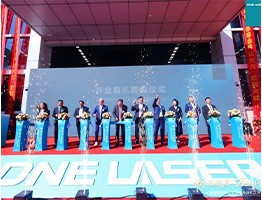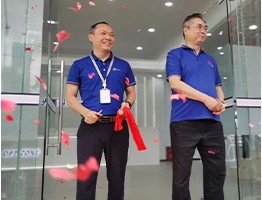Materials-processing Modeling: Dynamic Spot Shaper software improves laser heat treatment
source:Laser Focus World
release:Nick
keywords: laser beam laser hardening Materials-processing Modeling
Time:2018-01-24
JESÚS DOMÍNGUEZ, M. ANGELES MONTEALEGRE, JUAN F. IZASA P., and PAULA SANCHO
The parameters of a scanned laser beam are dynamically altered by software, tailoring heat distribution to the application.
One of the major challenges in laser hardening of metals has to deal with geometrical irregularities of the treated components. This problem arises particularly in laser hardening of uneven surfaces such as those with sharp edges or holes. In these cases, because of the differences in the surrounding volume of the material, overheating problems often appear, leading to unacceptable treatment results. Despite numerous efforts to figure out how to achieve uniform transformation profiles, the design and control of a beam-delivery strategy that leads to a desired transformation profile in the general case remains a technical challenge.
One problem is that the width of the heated zone is limited by the dimensions of the focused laser spot. One solution is to use optics to modify the shape of the spot—for example, to create a substantially rectangular spot having a more-or-less uniform energy-density distribution.
As an alternative, scanning optics can be used to repetitively move the spot over the track so that the heat source can be considered a rectangular source moving along the track. The use of scanning optics allows adapting the distributions of the laser power density in a determined area by changing the laser trajectory and by varying parameters such as the scanning speed and/or laser power inside this area.
Dynamic spot-shaper software
Dynamic Spot Shaper (DSS) is the name given to novel control software developed by Talens Systems. The following equation summarizes the relationship between the main process parameters that participate in laser processes and that, among others, are taken into account in the DSS software:
E = P/(Ø · V)
where E (J/mm2) is the energy deposited per unit area, P (W) is the laser power, Ø (mm) is the spot diameter, and V (mm/s) is the scanning speed.
Tailoring and adapting the shape of the customized 2D beam to provide enhanced heating of the surface can be initiated and controlled by the DSS software in two ways. The most intuitive way of changing the energy-density distribution within the effective spot is to modulate the laser power within the scanned pattern, requiring a quickly modulated laser source. The second, and preferred, way is to change the time during which each segment of the customized spot is heated up by scanning the pattern at different speeds.

FIGURE 1. A defined scanning pattern (a) is shown along with two schemes for customizing the energy density distribution in the 2D beam: constant power with variable scanning speed (b) and constant scanning speed with variable power (c).
Figure 1 shows, for a given pattern, the 2D customized beam generated by use of these two techniques—varying the scanning speed and varying the laser power. It can be observed that the 2D beam generated is the same in both cases. The table shows the range of powers and scanning speeds used to achieve these two equivalent beams.

FIGURE 2. Three different laser tracks on S335 steel were created at the same energy density (107 J/mm2), but with different laser powers (2, 4, and 6 kW, respectively).
Even though the customized beam may look the same in both cases, the hardening behavior will depend on the properties of the treated materials and the process parameters (laser power, scanning speed, and traverse speed). As shown in Fig. 2, three different figures illustrate results achieved with the same energy density (107 J/mm2) but with different laser parameters, demonstrating this phenomenon. The treatment results on the material surface vary greatly, from not affecting the surface (first photo at 2 kW) to melting it (last photo at 6 kW). This is because material responses to the two different types of changes (process speed or laser power) are not equivalent—while variations in process speed predominantly affect microstructure transformations and the depth of the hardened zone, changes to the laser power affect the temperature reached, which also relates to the temperature gradient in the material.
The combination of the scanner and the DSS software is what provides the ability to dynamically adapt the laser beam shape in real time to geometrical singularities.
Laser-hardened crankshafts
The combustion-engine crankshaft is one of the most challenging parts to successfully laser-harden because of its lubricant holes, differing and complex geometries, and the demanding mechanical requirements of the part itself. Hardening these complex geometries is possible using DSS via customizing the laser beam both in shape and in energy-density distribution.

FIGURE 3. Optical micrographs of cross-section of hardened areas and hardening through a hole: the result of band hardening (a) and band and fillet hardening with controlled depth along the hardened zone (b). DSS allows hardening around a hole with no negative impact on the metallurgical properties of the part (c).
Figure 3 shows two different cross-sections of treated areas—the result of band hardening, and band and fillet hardening with controlled depth along the hardened zone. One of the main challenges of journal laser hardening is the lubrication holes placed along the laser track. Without appropriate control of the process, overheating of the surrounding areas is likely, melting the edges of the holes. The dynamic beam shape generated by varying the energy distribution within the pattern using DSS can harden around the hole with no negative impact on the metallurgical properties of the part. The software is currently integrated in production lines for laser hardening of crankshafts with a delivery time of 180 s per piece.

FIGURE 4. DSS software applied to hardening a crankshaft; variations in scan parameters are shown.
The DSS software reduces the instances in which adjacent laser tracks are needed, as the scanning width can be dynamically adjusted (see Fig. 4). In cases where overlapping of adjacent laser tracks is necessary because the scanned pattern is not wide enough due to physical limitations, the ability to adapt the 2D beam allows minimizing of the tempered area generated in the overlap. Different patterns can be created "on the fly"—along a path with changing surface requirements, the operator can customize the beam shape, creating a direct relation between the component geometry and the energy distribution.
In addition to laser hardening, the DSS software can be used in other laser applications such as cladding, welding, and remelting, as well as for other industrial sectors that include automotive, aerospace, and mold-and-die manufacturing.
 4th Collaboration! What Brought the Global Laser Academic Guru to Chinese Univs & Leading Firms?
4th Collaboration! What Brought the Global Laser Academic Guru to Chinese Univs & Leading Firms? DNE Laser Foshan Smart Manufacturing Base Grand Opening: New Brand Image Starts New Journey
DNE Laser Foshan Smart Manufacturing Base Grand Opening: New Brand Image Starts New Journey Live: DMP GBA Expo – Laser Hard Tech Leads Industrial Smart Manufacturing New Wave
Live: DMP GBA Expo – Laser Hard Tech Leads Industrial Smart Manufacturing New Wave Scientists Develop Palm-sized Short-pulse Laser System: Efficiency Increased to 80%
Scientists Develop Palm-sized Short-pulse Laser System: Efficiency Increased to 80% Global LiDAR Giants Engage in Escalating Patent Wars
Global LiDAR Giants Engage in Escalating Patent Wars
 Shi Lei (Hipa Tech): Focus on Domestic Substitution, Future Layout in High-End Laser Micromachining
Shi Lei (Hipa Tech): Focus on Domestic Substitution, Future Layout in High-End Laser Micromachining Optizone Technology: 17 Years Devoted to Optics – High-Power Optics Mass-Production Pioneer
Optizone Technology: 17 Years Devoted to Optics – High-Power Optics Mass-Production Pioneer Zhuojie Laser: Breaking barriers via tech breakthroughs, aiming to lead high-end light sources
Zhuojie Laser: Breaking barriers via tech breakthroughs, aiming to lead high-end light sources Dr. Sun Linchao: Pioneer and Leader in China's Field of Medical Aesthetic Laser Therapy
Dr. Sun Linchao: Pioneer and Leader in China's Field of Medical Aesthetic Laser Therapy Guo Guangcan, CAS Academician & USTC Professor: Four Decades Chasing Quantum "Light"
more>>
Guo Guangcan, CAS Academician & USTC Professor: Four Decades Chasing Quantum "Light"
more>>
